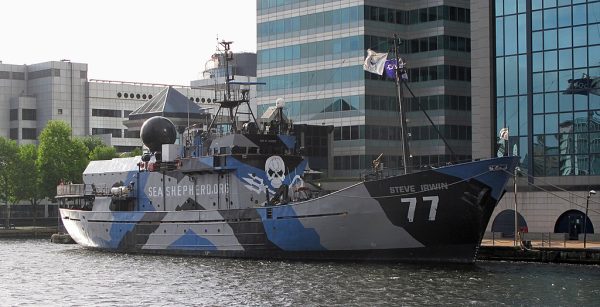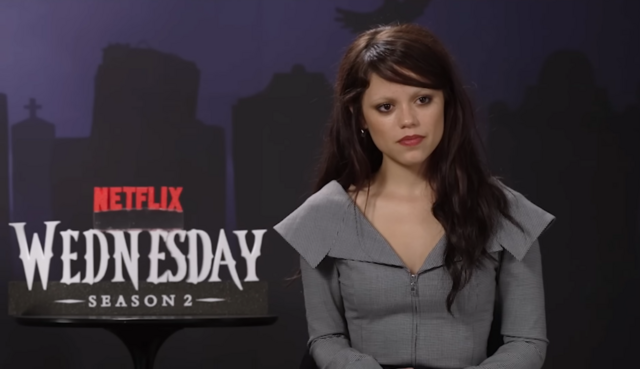Society is undoubtedly shaped by visual media. documentaries and TV shows have become a lens through which many of us explore reality. Through the blend of gripping storytelling and provoking visuals, these mediums have an unparalleled potential to captivate and educate.
The environmentalist movement has found a profound voice within movies and TV shows. Through films like “Blackfish” and series such as “Captain Planet and the Planeteers” we have not only been exposed to environmental challenges but also been called to action.
Today we will go over, six influential environmentalist works and uncover the impact visual media has had in shaping environmental activism and the significant change they have caused to the public perception regarding the topics they deal with.
“Blackfish,” released in 2013, is without a doubt one of the greatest documentaries of modern times. With a rotten tomatoes rating of 99%, the movie shattered the carefully crafted image of marine amusement parks. Director Gabriela Cowperthwaite ignited a public debate on the ethics of orca captivity. The film, revolving around Tilikum, an orca involved in the death of SeaWorld trainer Dawn Brancheau, peeled back the curtain to reveal the darker side of aquatic theme parks.
What made “Blackfish” remarkable wasn’t just its exposé of SeaWorld’s practices but how it challenged our own complacency. More than just a presentation of distressing facts; Cowperthwaite took us on an emotional journey that forced us to confront the truths about animal captivity and entertainment. The documentary’s raw storytelling, combined with haunting visuals, struck a chord with audiences worldwide.

SeaWorld faced intense backlash, leading to significant policy shifts, including the end of their orca breeding program. This response underscored a crucial point – when confronted with undeniable truths, even the most entrenched practices can be challenged and reformed.
Environmentalist filmmaking comes in all shapes in sizes, “Blackfish” was a mainstream hit, but not all environmentalist documentaries reach millions, some take a very different route and remain niche and underground. The 2011 documentary “If a Tree Falls: A Story of the Earth Liberation Front” is a perfect example of this.
This cult classic takes a deep dive into the world of environmental radicalism. Unlike “Blackfish,” which brought to light animal welfare issues, this film, directed by Marshall Curry, explores the fine line between activism and extremism. It centers on the Earth Liberation Front (ELF), a group notorious for its extreme tactics in the name of environmental protection.
A personal favorite of mine this documentary offers a glimpse into the ELF’s motivations, struggles, and the moral dilemmas they faced. Through the story of Daniel McGowan, an ELF member, the film presents a humanized perspective of the group, often lost in mainstream media narratives.
The film expanded the dialogue on environmental advocacy, pushing audiences to consider the broader implications of radical tactics in achieving ecological goals. Its contribution lies not just in telling the ELF’s story but in compelling us to reflect on the effectiveness and ethics of different forms of environmental activism.
“If a Tree Falls” might’ve never made it to the silver screen but to a handful of people, it was how they were introduced to radical activism. From low-budget niche classics to world-renowned documentaries the power of filmmaking is its ability to come in so many different forms and in impact in so many different ways.
“An Inconvenient Truth,” is easily one of the most influential pieces of environmental media ever made. released in 2006 and Directed by Davis Guggenheim this documentary was a watershed moment in environmental filmmaking. Featuring former Vice President Al Gore, this documentary took on the colossal task of bringing the climate to the living rooms of ordinary people worldwide.

Gore’s presentation of scientific data on global warming, interwoven with personal anecdotes, made “An Inconvenient Truth” a unique blend of the personal and the universal. What set the film apart was its ability to make climate change – a seemingly distant and complex issue – an accessible and understandable matter for the average person.
The documentary altered the global conversation on climate change, raising the public demand for action and influencing environmental policies. “An Inconvenient Truth” catalyzed a global environmental movement. It exemplified how powerful storytelling, grounded in science and imbued with a sense of urgency, could leave an indelible mark on both public consciousness and policy.
Documentaries are not the only vessel through which environmentalism finds its way to the mainstream world. “Whale Wars,” a television series that first aired in 2008, brought everybody’s favorite anti-whaling vigilianites into the living rooms of viewers worldwide The series chronicled the high-seas confrontations between the Sea Shepherd Conservation Society, led by Captain Paul Watson, and Japanese whaling fleets in the Antarctic.
What set “Whale Wars” apart was its raw, unfiltered look at environmental activism. It wasn’t staged; it was a real-life drama unfolding on the high seas. Viewers were given a front-row seat to the tactics, the dangers, and the emotional highs and lows of a group determined to save whales from illegal hunting. The series was a masterclass in storytelling, balancing the thrill of the chase with serious discussions about conservation and the legalities of whaling.
“Whale Wars” played a pivotal role in raising global awareness about whaling, not only bringing attention to the issue but also to the controversial methods of the Sea Shepherd. It sparked debates about the ethics of direct action in environmental activism, pushing viewers to question how far is too far when it comes to protecting the planet.

Its portrayal of the Sea Shepherd’s relentless crusade against whaling played a part in shifting public opinion on “eco-terrorist” groups and put pressure on governments to take a stand against whaling practices. The series exemplified the power of visual media to turn a spotlight on environmental issues and mobilize public sentiment for conservation efforts.
“Whale Wars” dealt with real-life heroes who to this day are hard at work on the high seas but environmentalism has also seen its share of made-up superheroes with “Captain Planet and the Planeteers,” being the most iconic of them. This animated TV series from the early 1990s had a unique approach to educating young audiences about ecological issues. Created by Ted Turner and Barbara Pyle, the series was a pioneer in blending entertainment with environmental messages.
The show centered around five young “Planeteers,” each equipped with rings that control natural elements and summoned Captain Planet, a superhero dedicated to protecting the Earth. The genius of “Captain Planet” was its ability to address complex environmental issues – from pollution to wildlife conservation – in a way that was accessible and engaging for children.
Each episode of “Captain Planet” tackled different environmental challenges, often mirroring real-world issues, and always concluded with the show’s mantra, “The power is yours!” This catchphrase was an empowering message to young viewers, emphasizing their role in making a difference for the planet.
The cultural impact of “Captain Planet” was significant. For many children of that era, it was their first introduction to environmentalism, shaping their attitudes and understanding of ecological issues.
“Captain Planet” showed the world that cartoons could be both fun and educational, being a medium for environmental activism the show inspired a generation of future activists.
In the battle against the ecological crisis, all help is welcome, from elected officials to fictional superheroes everyone can play their part. One individual who used their name and popularity to further the movement with a show of his own was Bill Nye.
“Bill Nye Saves the World,” is a Netflix series that debuted in 2017 and brought a fresh, scientific perspective to environmental education and activism. Hosted by the beloved “Science Guy,” the show tackles various environmental and scientific topics, ranging from climate change to renewable energy, in a format that’s both accessible and entertaining.

What set the show apart from other environmental works was its blending of science and pop culture. Bill Nye, with his characteristic bow tie and engaging persona, breaks down complex environmental issues into digestible, understandable segments. The show is interspersed with experiments, panel discussions, and correspondents’ reports, making it a dynamic platform for exploring pressing ecological challenges.
A key strength of “Bill Nye Saves the World” is its appeal to a broad audience. Nye’s communication skills make the show particularly effective in reaching younger viewers, potentially fostering a new generation of environmentally conscious individuals.
As we conclude our journey through the world of environmental documentaries and TV shows, it becomes clear that these visual narratives have profoundly influenced the dialogue around our planet’s health.
From the dramatic seascape conflicts to educational ones, each piece has contributed to raising awareness and inspiring action in the face of environmental challenges.
These works exemplify how media can be a powerful tool in the environmental movement. Through vivid storytelling and compelling evidence, they have not only brought attention to the pressing issues but also motivated public action and policy reform.
As the screens turn to black, the call to action lingers, encouraging us to play our roles in shaping a greener, more sustainable future.







